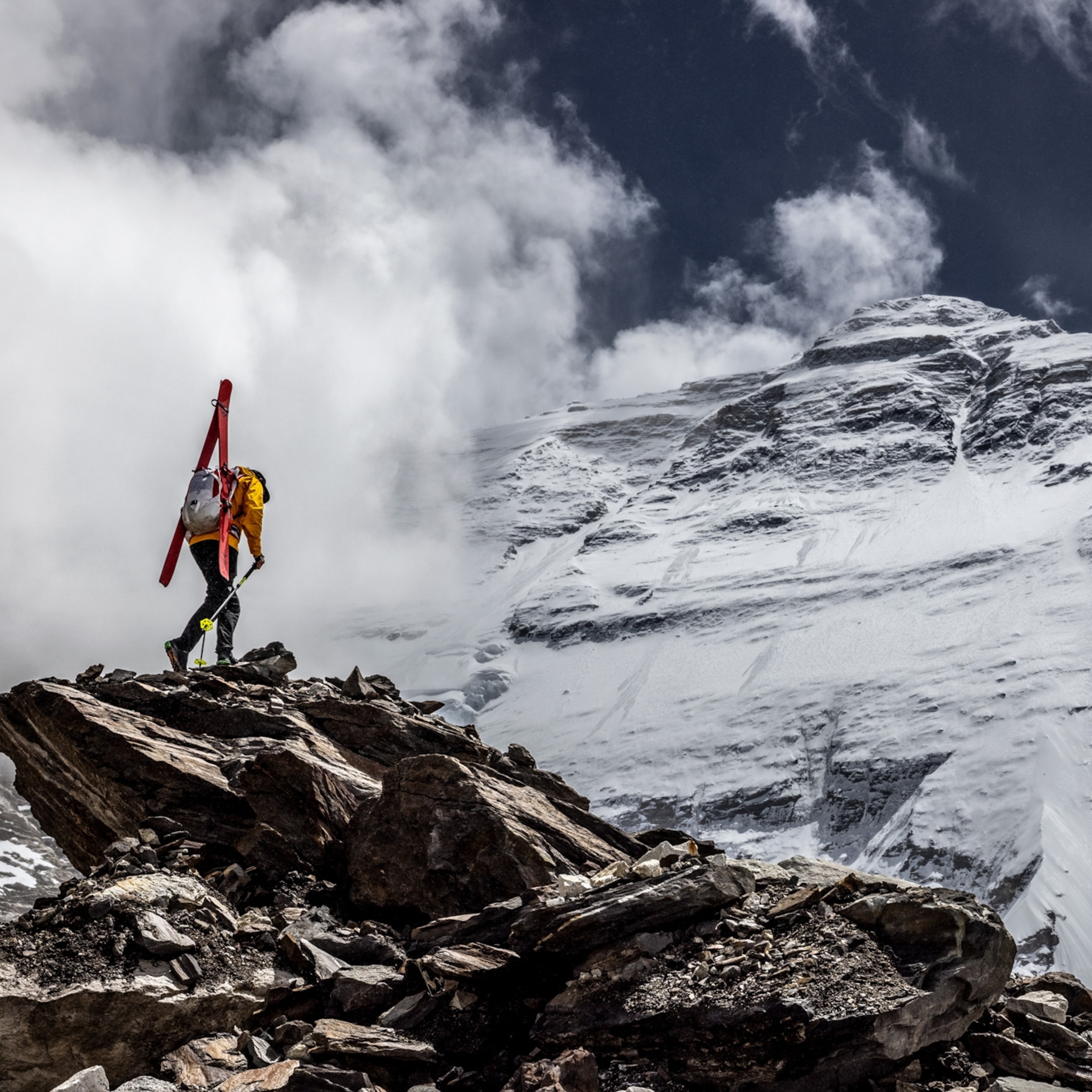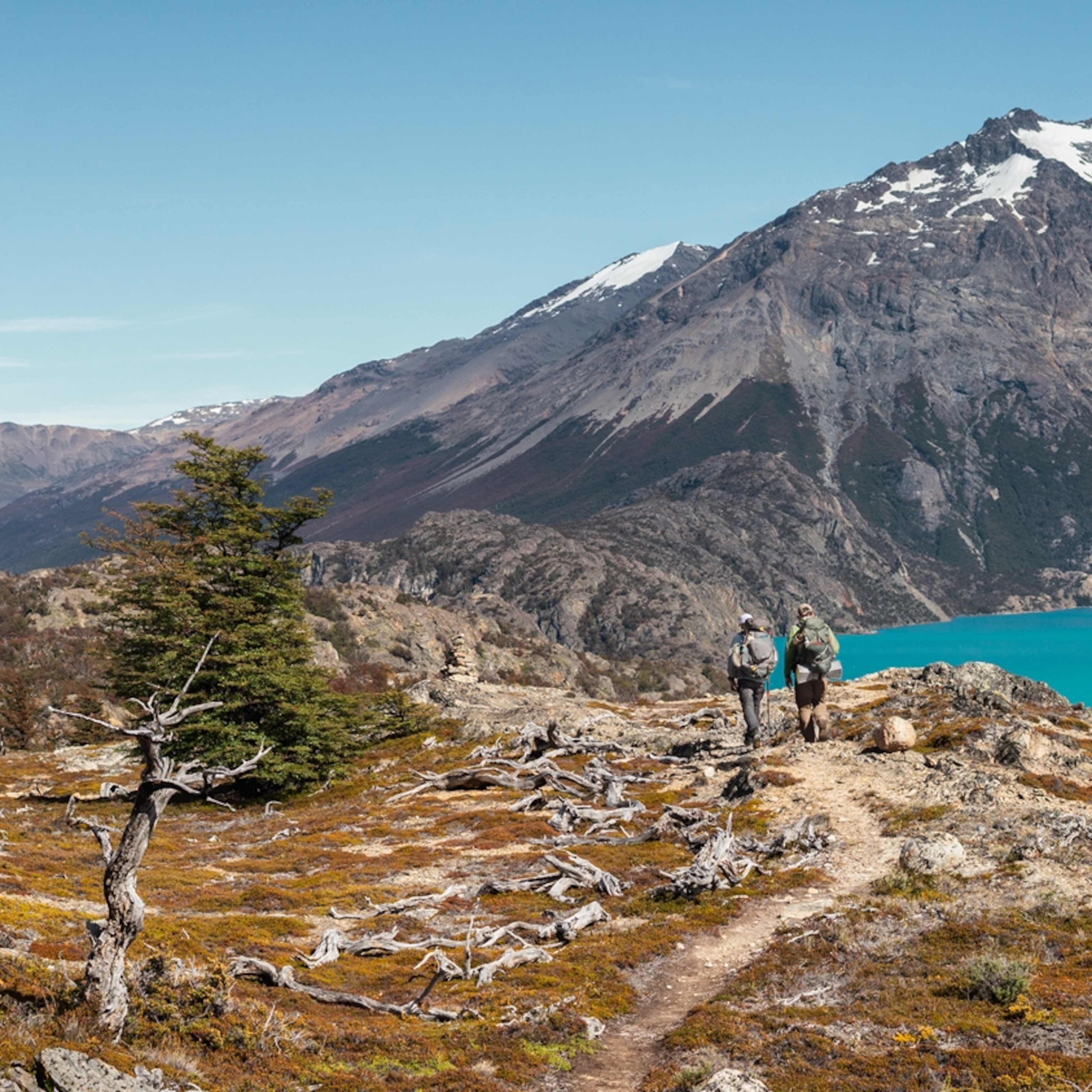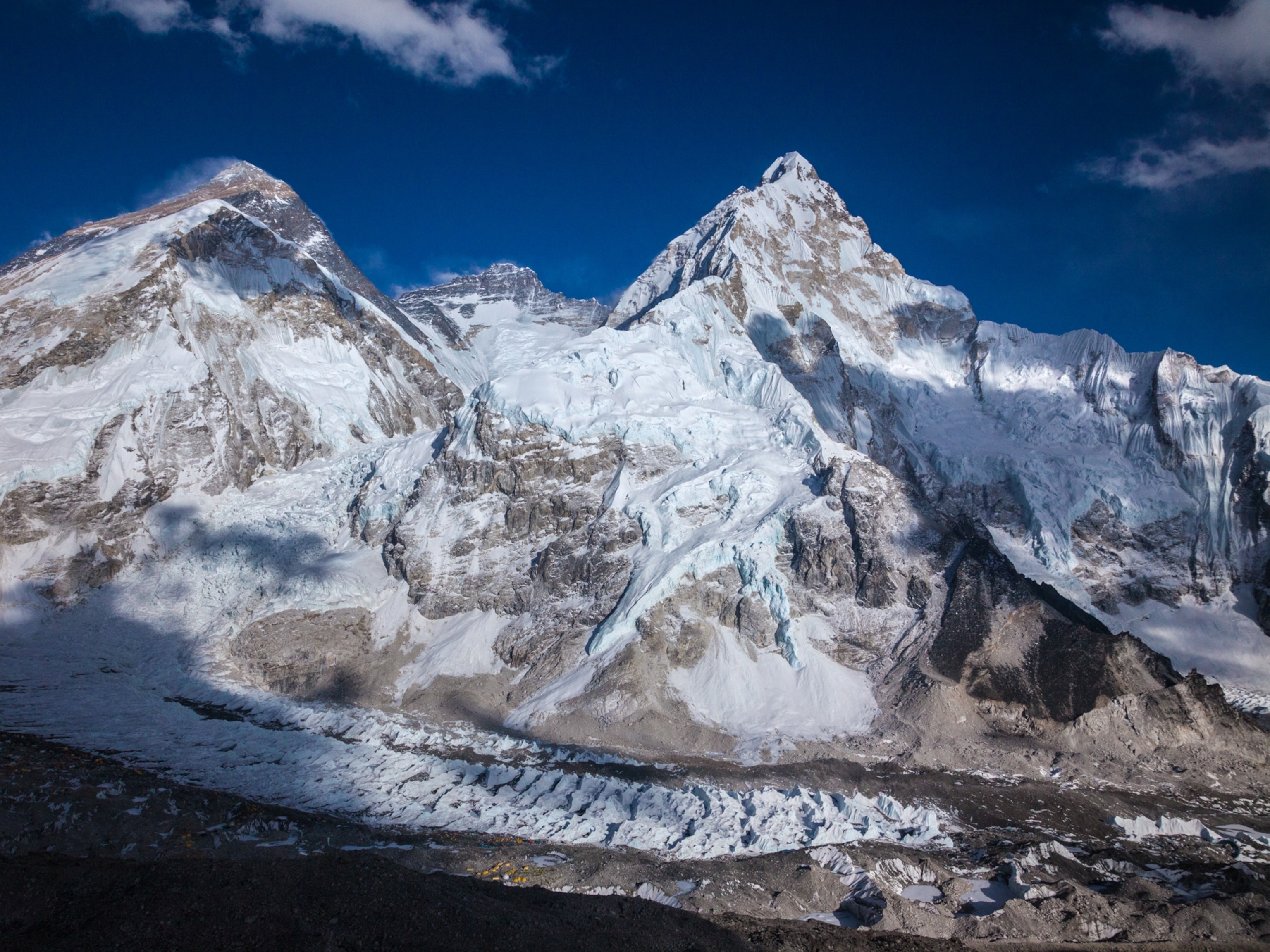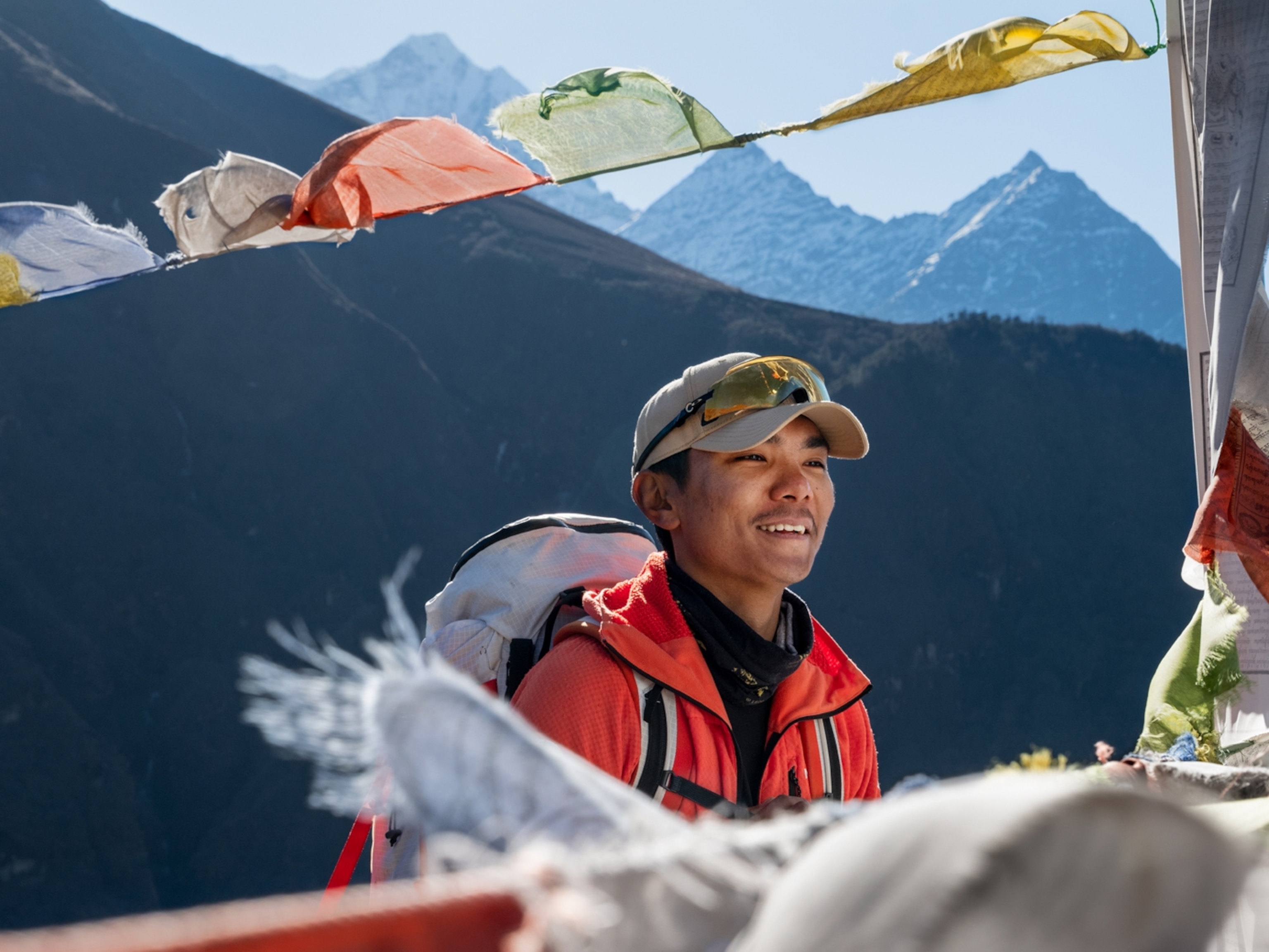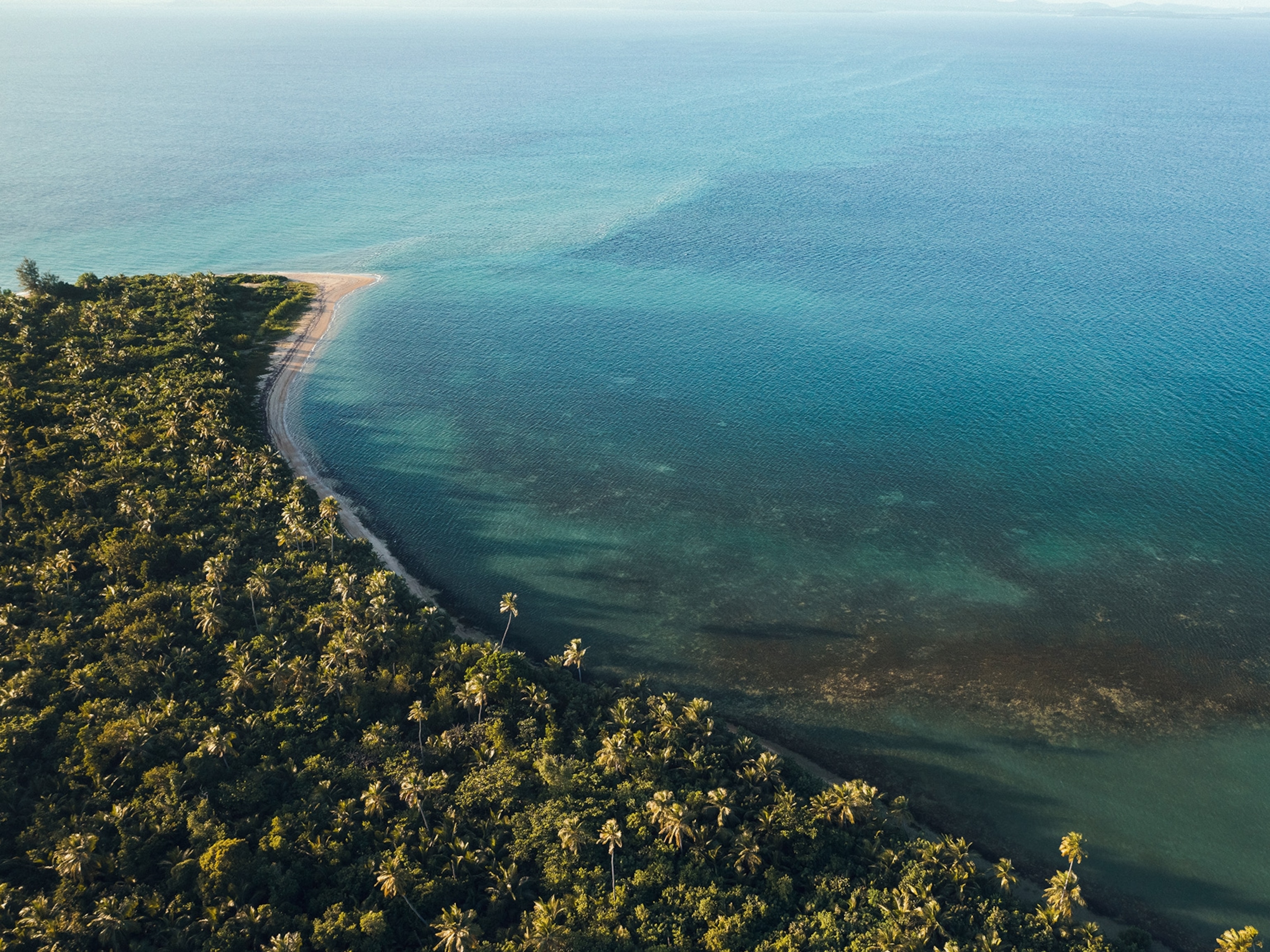
Do You Love Camping in the Mountains? So Did People 11,000 Years Ago.
Ancient mountain peoples made their home in some of Wyoming’s most popular outdoor recreation areas—and alpine archaeologists are just beginning to unlock the secrets.
Daylight was fading in Wyoming’s remote Wind River Range, and I turned on my headlamp to look for one final piece of firewood. I was 13, on a weeklong camping trip with friends, and we had set up our tents at the edge of a vast alpine meadow at 11,500 feet. As I reached for a branch something flickered in the light—a tiny arrowhead resting in the grass. I wondered how it had gotten to such an isolated place, and then I hustled back to the campfire. I never expected that I would return to this spot, years later, and make a startling discovery.
The Wind River Range's varied terrain, stunning vistas, and sense of isolation have long attracted backpackers, climbers, and skiers seeking a quieter and more mysterious alternative to the crowded Tetons in nearby Jackson Hole. What many don’t realize is that these peaks formed a nexus for mountain communities long before the invention of Gore-Tex, freeze-dried meals-in-a-bag, or titanium chopsticks. In fact, Native Americans began venturing high into the alpine zone and establishing camps nearly 11,000 years ago.
A Game-Changing Discovery
We didn’t know about these ancient settlements until very recently. High places have traditionally been overlooked in archaeology. Even in towns like Jackson, the mountains are where we go to play, relax, and get away from it all; they aren’t where we live. It’s easy to trick ourselves into thinking that our modern wilderness areas were always on the outskirts of civilization, untouched by humans for thousands of years. As such, the Rocky Mountains have remained one of the largest blank spots on the archaeological map of North America. And for those of us with an interest in the alpine, this gap presented a wild and exciting opportunity.
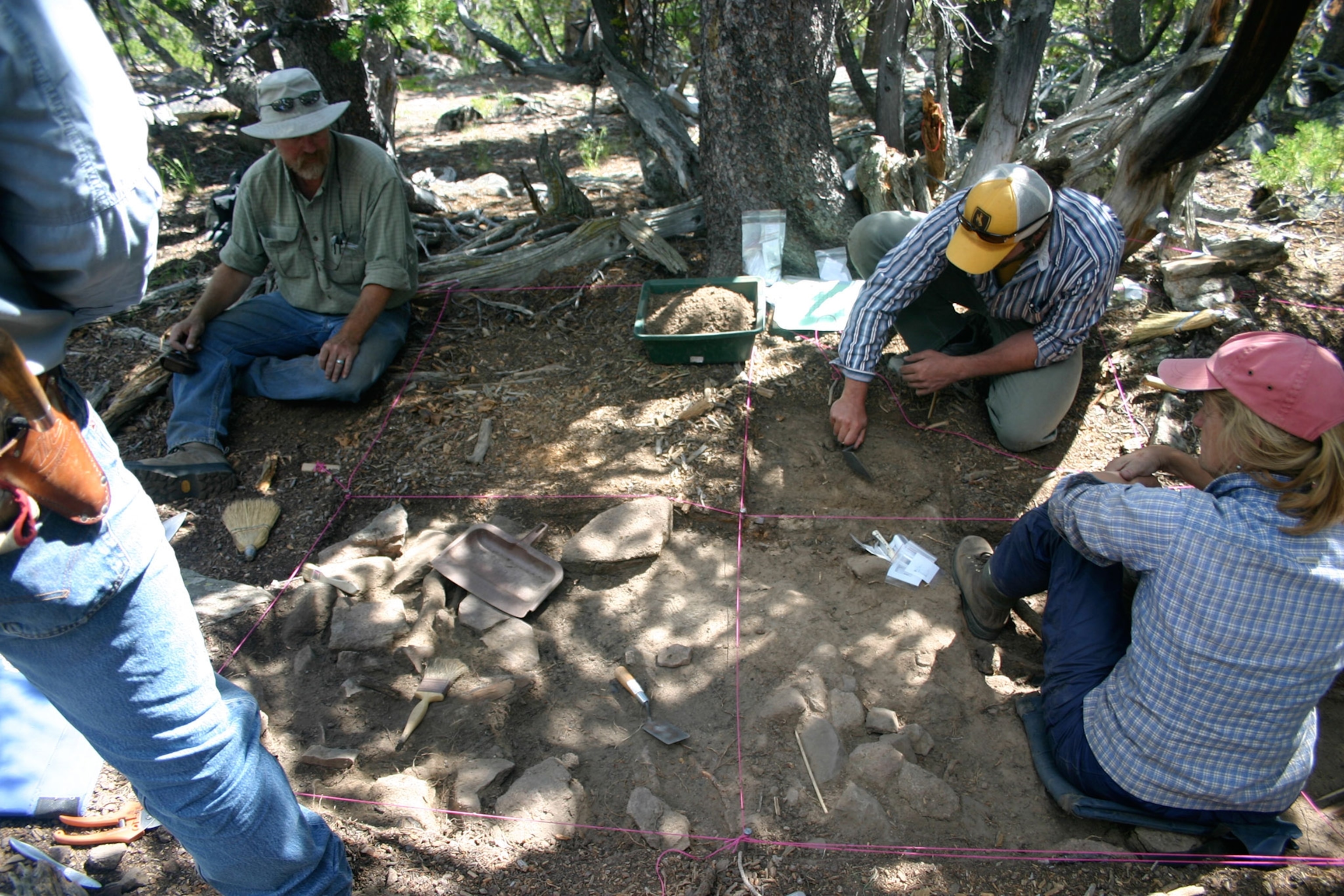
In 2006, Dr. Richard Adams, an archaeologist from Laramie, Wyoming, made the unexpected discovery of a prehistoric settlement, which he named High Rise Village, at 11,000 feet in the northern Winds. This find altered a long-standing impression that mountainous environments were too harsh for survival. It also sparked a new interest in alpine exploration; if an entire alpine village could exist without anyone knowing, what else was out there?
My journey into alpine archaeology began when I was a student at Davidson College in North Carolina and climbing instructor for Exum Mountain Guides in Grand Teton National Park, Wyoming. I received a call from Adams, who had just discovered High Rise Village and invited me to join a small team to investigate it. We found that the site contained more than 75 house structures and tens of thousands of chipped-stone artifacts, and was inexplicably located on a steep slope that would make a challenging double black diamond ski run.
Over the next few summers we began to excavate and study High Rise Village. We uncovered pottery, lances, bone tools, and hundreds of arrowheads that suggested people had lived here from 2,000 years ago until Euro-Americans arrived in the 1700s. Decoding the archaeological record from scattered artifacts wasn’t easy. (A professor once told me that interpreting archaeology was like reading a book without page numbers: “All of the clues are there, it’s just a matter of putting them in order.” But he failed to mention that the book was in a foreign language and had been put through a paper shredder.)
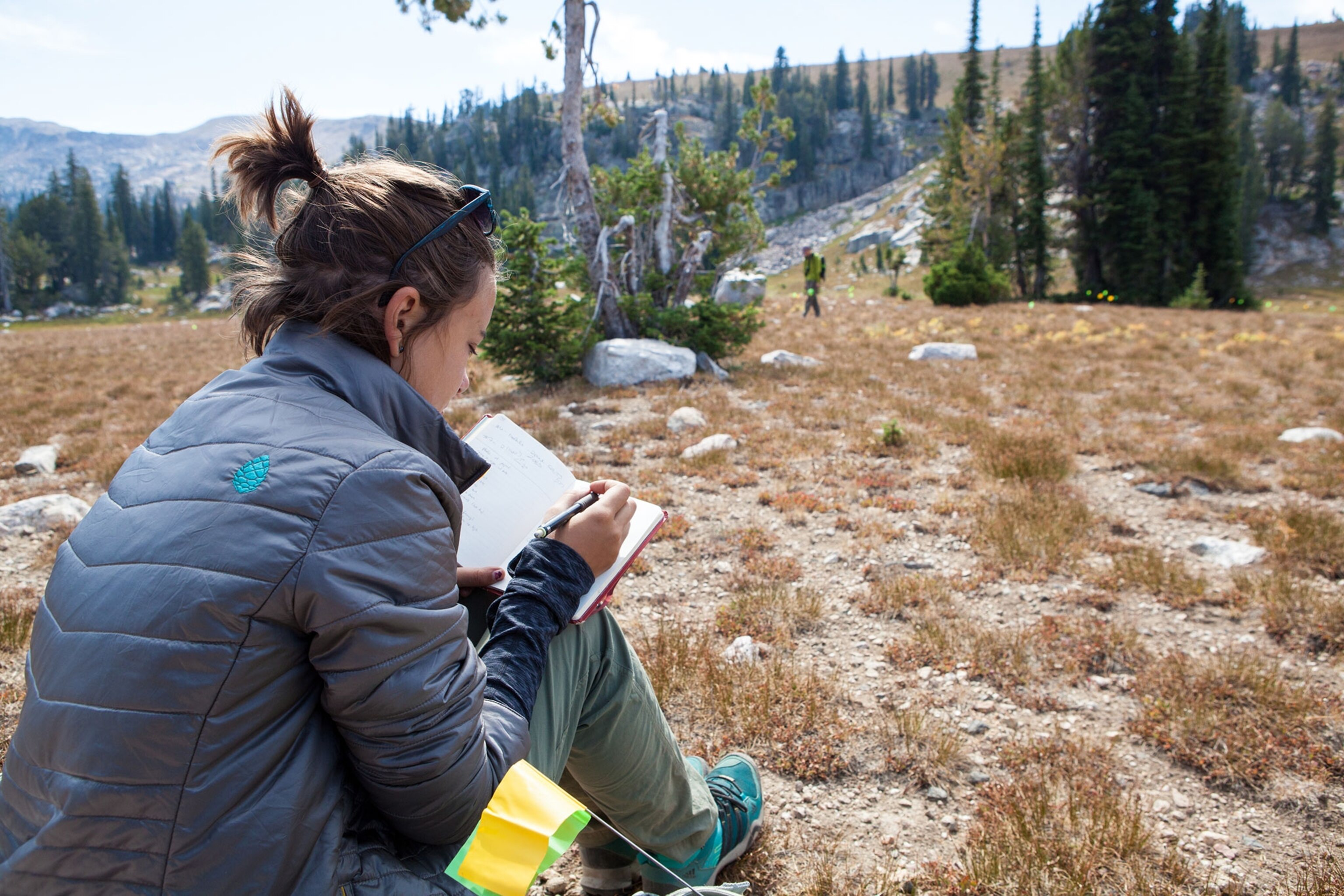
The complexity of the site showed that the families who lived there were deeply familiar with their environment, and, despite being at such a high elevation and on a steep alpine slope, life wasn’t all that different in the mountains. If you were familiar with how to live there, it wasn’t that difficult to survive. We also discovered that High Rise wasn’t all that was up there. Within a two-hour walk we identified nearly a hundred other, smaller, archaeological sites that extend 11,000 years into the past. This mountain wilderness, it seemed, had never really been alone.
A Pattern in the Peaks?
While the study of High Rise could fill a lifetime, we found ourselves wondering: was High Rise Village and its surrounding sites an anomaly, or was it evidence of an even larger and more significant pattern? In the summer of 2010, we decided to find out. Using what we had learned at High Rise, I developed a satellite-based computer model that predicted where similar sites might be. I assembled a team and, under the auspices of the Explorers Club, launched a survey expedition into an archaeological blank spot on the map of the Continental Divide.
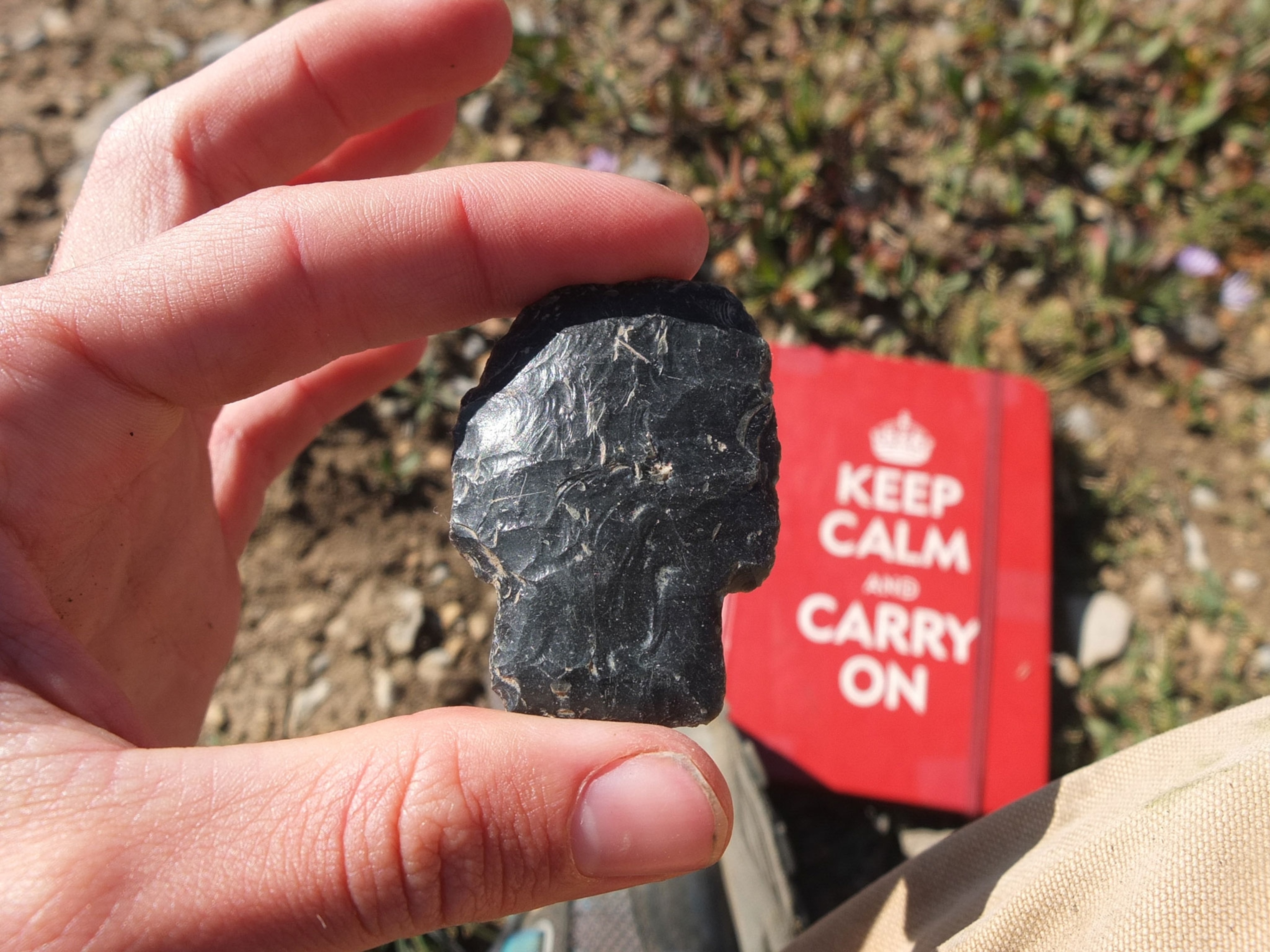
Our team had all been mountaineers or outdoorsmen in their past lives and consisted of professional archaeologists, retired outfitters, family members, and John, an 83-year-old master’s student who had been with us since day one. When asked at the end of a 20-mile day how he could still do it, John smiled and replied, “Every day spent above 10,000 feet doesn’t count.” A day in the mountains is a day exempt from the cycle of life, a freebie where time momentarily stands still. I’ve discovered this attitude makes a successful alpine archaeologist. While education and fitness may certainly help, it is the ability to truly appreciate the wonder of the mountains that coaxes them into revealing their secrets.
Our search for new villages was guided by my computer model, which placed a convenient red X on a map where undiscovered sites might be. When I noticed that one such X was located over the campsite where I had spent my first night backpacking as a young teen, I was intrigued. Using horses to transport equipment, our team of six hiked more than 40 miles deep into the Wind Rivers and established a base camp from where we could conduct daylong surveys across the landscape.
Conducting wilderness archaeology is a lot like planning a mountaineering expedition with a scientific theme. It requires all of the supplies to travel safely and comfortably in the backcountry, but also the equipment necessary to map and excavate an archaeological site. It simply wasn’t possible to backpack in, and besides, horses allowed us a few luxury items like solar showers, poached salmon for dinner, and the occasional six-pack of beer (we’re scientists, not thru-hikers, after all!).
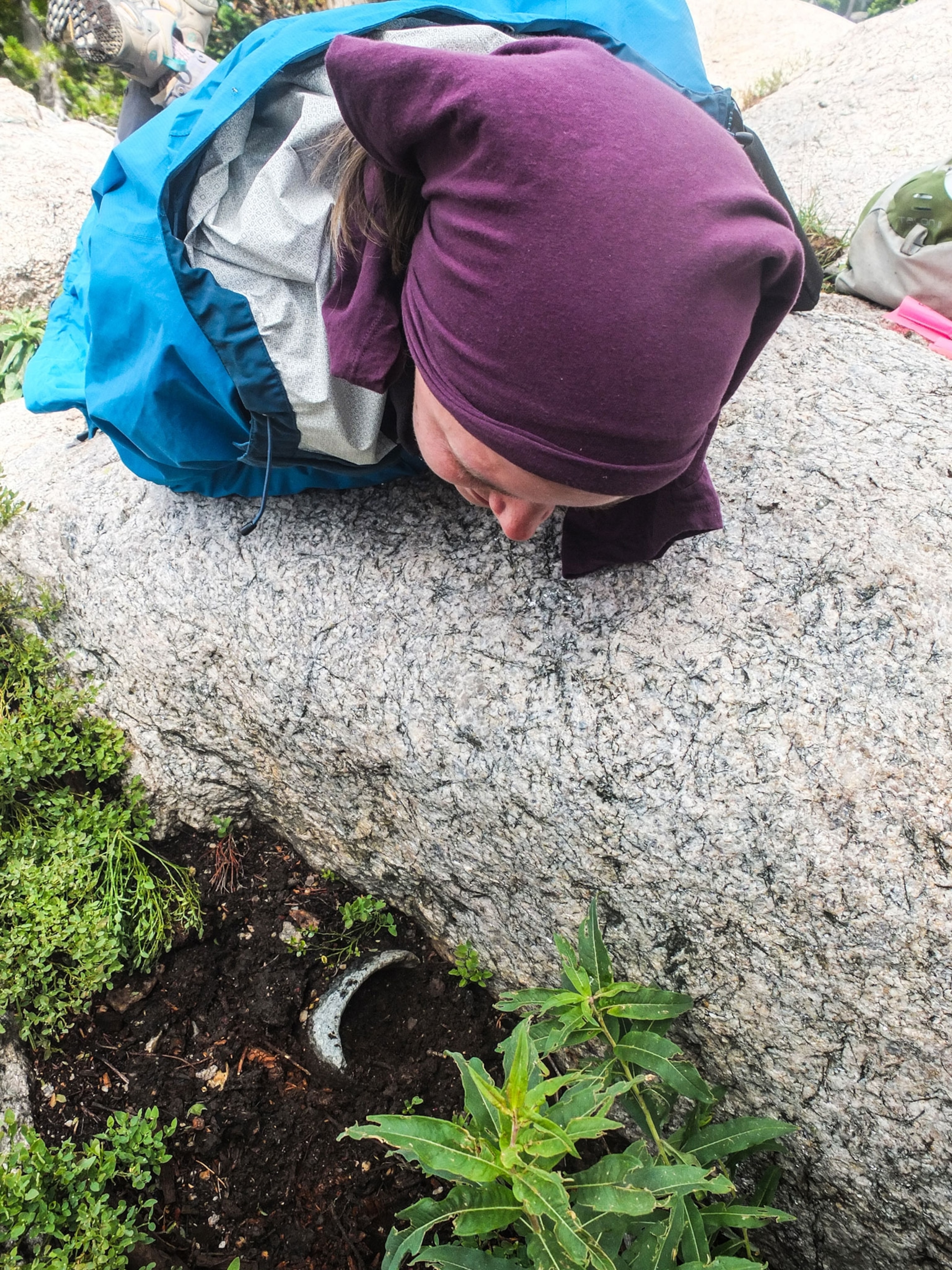
Over the course of the next several weeks we found 13 new prehistoric alpine villages. And to break the first rule of archaeology that Indiana Jones had laid out years before, every village was located under a red X, exactly where our computer model had predicted. It was a sure sign that we were beginning to understand the landscape and how it had been used for centuries. In addition to these villages, we found many more prehistoric sites ranging the full scale of human occupation in the area. We found bowls carved of steatite, or soapstone; grinding stones used to crush whitebark pine nuts; and pits dug into the alpine tundra allowing ancient hunters to hide from herds of bighorn sheep.
Just as we had witnessed at High Rise, the rest of the northern Wind Rivers had provided a comfortable summer home for mountain-loving peoples since the end of the Ice Age. The high tundra was not an obstacle as had been previously thought, but instead attracted groups throughout the Western Plains and Great Basin.
- National Geographic Expeditions
On our final day of the season we revisited my childhood campsite. I found the arrowhead lying exactly where I had left it. I also located the flat pad where I had once erected my tent—and immediately lost my breath. After years of archaeology experience, I observed the scene with a different eye: Embedded in the ground surrounding where I had camped was a stone circle. What I had once assumed to be a modern camping spot was in fact a prehistoric house structure. It was as if, for a split second, John was right and time stood still, the mountains had preserved an ancient moment that extended into my own lifetime. I laughed to myself as I pulled out the paperwork from my backpack and began to take notes, recording a story of past mountaineers that began 2,000 years ago and ended with an eager kid on his first backpacking adventure.
A Story Still Being Written

Since that summer, our team has discovered hundreds of new archaeological sites above the tree line in northwestern Wyoming. Despite the many miles we’ve walked, dozens of notebooks filled, and months spent under the stars, we’re only beginning to formulate ideas about past mountain life. With help from more than a dozen colleagues, we’ve started to create a prehistoric map of the mountains. We’re finally reversing the misconception that "nobody used to live up there." And now it is time to dig deeper.
For the past three years my team and I have focused on the Tetons, where I have collaborated with climatologists, chemists, and geologists to look at mountain archaeology with a more scientific eye. We are also collaborating with likeminded projects in the Rockies that are exploring new ways to interpret the alpine. We hope to investigate some remaining questions: What was it like to be part of a mountain community 10,000, 5,000, and 500 years ago? How did the environment change over the years? How have people impacted the spectacular mountain landscape and how has it shaped us?
The mountains are vast, and it will take a group effort to fully unlock their secrets. It is humbling to think that, for me, it all began while on a search for firewood—a task that had been done for thousands of years in that very spot. That little arrowhead showed me that our time there represented just one chapter in a long and still developing story.
Matt Stirn is an archaeologist and photographer from Jackson, Wyoming. With his wife, Rebecca, he co-directs archaeological research at the Jackson Hole Historical Society and Museum. They currently run three research projects in Wyoming and Idaho, and are environmental archaeologists for projects in Greece and Italy. Stirn is a fellow for the Explorers Club and an ambassador for Stio outdoor apparel and SPOT rescue devices. Follow him on Instagram, on Facebook, and at www.mattstirnphoto.com.
